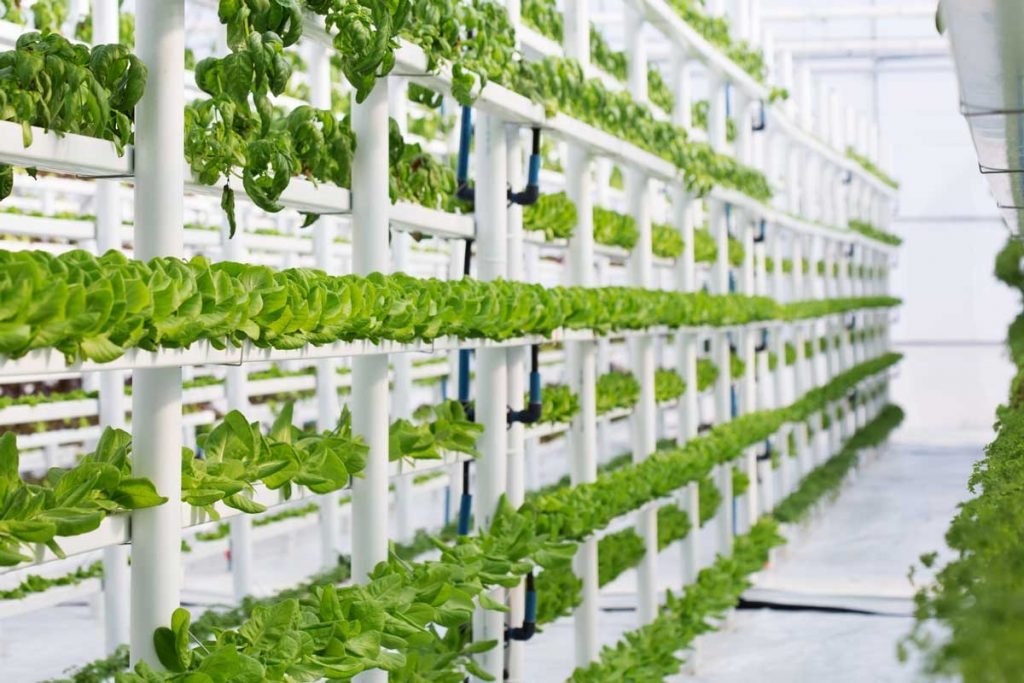Hydroponic gardens are all about maximizing the produce by utilizing several advantages that a hydroponic setup provides.. But vertical hydroponic systems take things a step further as they not only require less space but also consume almost 90 per cent less water and provide a much better harvest.
They can be set up anywhere in your backyard, balconies, kitchen garden, or even inside your home. This is a process that combines the techniques of hydroponics and vertical planting and provides the best out of both worlds. So, here’s all you need to know about setting up an indoor vertical garden:
Most effective ways of setting up a vertical hydroponic garden at home
Hydroponic vertical gardens can be set up utilizing different designs and techniques, but the fundamentals remain the same. A vertical hydroponic garden, also referred to as a hydroponic wall garden or hydroponic tower is an assembly of PVC pipes for the main structure, cups, or containers where the plants grow, a reservoir, a water pump, and grow lights. The water with the hydroponic nutrients is pumped to the top of the tower that then trickles down through the roots of the plants into the reservoir.
And there are several advantages of vertical hydroponics. The biggest advantage is that you can grow more produce in less space with indoor vertical gardens allowing people to set up hydroponic gardens within their homes. And since hydroponics requires no soil, which is ideal for vertical gardening, you can have a light, portable, and easy to handle vertical garden. It is highly efficient as you can grow 4-5 times more plants in minimum space, and since it consumes less water and nutrient solutions, it is more cost-effective as well.

Vertical Hydroponic tower
The fundamental idea behind the vertical hydroponic tower is to use a PVC pipe or a broader drainage pipe as the main structure through which the water is pumped into the plants. This main tower is drilled with holes at regular intervals where plants are grown inside cups or holding nets.
A water pump is used to get the water to the top of the tower, flowing down the system through the containers and settling in the reservoir below. You can either use a single tube to deliver water to the plants or multiple channels for each layer resulting in more efficient watering of plants. The containers holding the plants must be installed at a 45-degree angle so that the water can seep out of them.
Zig-zag vertical hydroponic system
This form of vertical hydroponic system uses multiple pipes arranged in a zig-zag way for maximum utilization of space and production. This is a more compact design layout, and the plant containers are placed at the usual 90-degree angle.
This system uses the NFT (nutrient film technique) to grow the plants where the water is pumped right at the top of the system, trickling down in a constant stream.
Rain Tower setup
Rain Tower setup is your usual one pipe tower system with a much more efficient water circulation system. This setup is excellent for maximizing the usage of water and nutrient solutions as there is minimum wastage of the resources. The water flow can be tackled very easily, and the system helps the plants grow better as the water and nutrients are efficiently pumped into the roots.
Here’s how to set up a vertical hydroponic garden
Vertical gardens are just as easy to install as they are effective and efficient. You only need very basic hydroponic supplies to build a vertical hydroponic garden.
- A large PVC pipe (usually 3 inches in diameter or more)
- End cap
- Minimum 5 gallons container with a lid
- Water pump
- Cups/containers for the plants
- LED grow lights
- Other tools like a drill, tape, ruler, markers, mitre saw
Follow these steps to set up a vertical garden
- Use the 5-gallon container as the reservoir and fix the PVC pipe in it
- Mark slots on the PVC pipe where the containers can be inserted to grow the plants. You can smartly utilize the entire 360-degree surface on the pipe to house the plant containers
- Make sure that you insert the containers at a 45-degree angle
- Use the water pump to deliver the water on the top of the pipe, which then trickles down the system providing the required nutrient to all plants
Even though vertical hydroponics is mostly a very efficient and fruitful setup, there are certain disadvantages that you should be aware of. While the water usage is very minimal, it is a challenge to create a perfect trickle-down effect in a vertical system. Besides that, if the water pumping is not up to the mark, it can damage the crop. Providing appropriate light can also be a challenge as the vertical design requires a skilful setting up of lights so that all plants get the desired amount.
Every system comes with its own challenges and disadvantages, but vertical hydroponic gardens provide more benefits than disadvantages. All you need is the right hydroponic supplies and the right knowledge to reap the multiple benefits of this space-efficient system.

